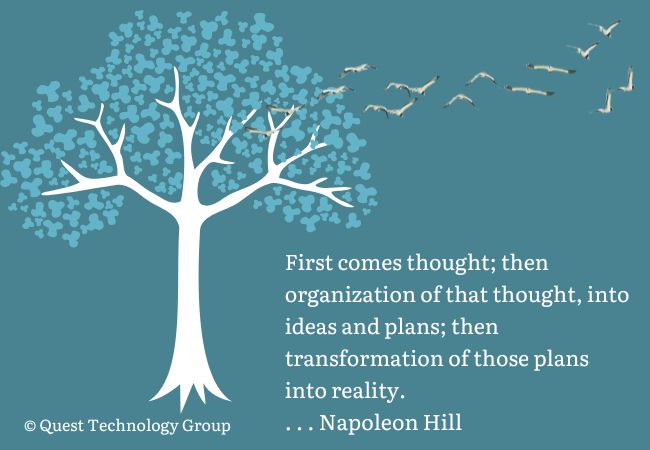How to Turn Information into Actions for More Customer Engagement

Consuming information without a practical put-it-to-work plan is like making a sandwich without bread. All you have is a sad spread of fresh deli turkey, Swiss cheese, crispy lettuce, an enormous Beefsteak tomato, creamy mayo, and spicy mustard. Nothing there to wrap your fixings into a proper snack.
In our last two emails, we shared two revenue-producing things every company can do.
Great Information. Now What?
Here’s the reality. Both of these are fine sandwich fixings.
But before we pull all of these ingredients out of the refrigerator, we need to be clear about what we’re making. Is it a sandwich or a salad? How does this fit into our healthy meal plan?
Even the best information is only useful and actionable when it has a place in your big plan. Information needs context and purpose. As I thought back to the last two emails, I wondered if any of you were saying --
8 Tips to Help You With "Now What?"
I consume a lot of content and find myself saying those same words. Or worse, I overlook a valuable insight because I didn't take the time to think about it. It’s easy to get excited about a fresh idea when you know that it makes sense. The problem is even a quick to do takes time and resources.
How will doing this contribute to the specific value we’re committed to delivering to our clients?
As one of their team members said, “That’s the best use of data I’ve ever seen .” It didn't happen because we had some secret advantage. We simply contributed a fresh, unbiased eye.
Every new idea can’t be done today.
Some should never be done.
If it’s right for your company and your clients, then it will still be right tomorrow or next week.
Pause. Patience. Purpose. Plan.
A Final Thought
Sometimes our clients and customers are telling us that one of our products or services isn’t what it used to be. It’s easy for us to neglect those reliable workhorse offerings.
Remember: Your clients are continually expecting the next fresh new thing from you. The same old stuff won't keep your customers connected no matter how much they like you.
This is one of the reasons why we encourage every company, regardless of size, to create and regularly revisit their software, hardware, and data inventories. These are the valuable company assets that support your long-term strategic commitment.
When your asset inventories need an unbiased look, we would love to work alongside you.
Thanks for the Wednesday Visit
You're in business to grow and deliver what your customers and clients want most from you.
We're here to help you make that happen.
We're a community of curious learners and business leaders. We talk information, knowledge, tools, and resources to help you and your business thrive.
Tags: Business Strategy
. . .
 Linda Rolf is a lifelong curious learner who believes a knowledge-first approach builds valuable client relationships. She is fueled by discovering the unexpected connections among technology, data, information, people and process. For more than four decades, Linda and Quest Technology Group have been their clients' trusted advisor and strategic partner.
Linda Rolf is a lifelong curious learner who believes a knowledge-first approach builds valuable client relationships. She is fueled by discovering the unexpected connections among technology, data, information, people and process. For more than four decades, Linda and Quest Technology Group have been their clients' trusted advisor and strategic partner. Linda believes that lasting value and trust are created through continuously listening, sharing knowledge freely, and delivering more than their clients even know they need. As the CIO of their first startup client said, "The value that Quest brings to Cotton States is far greater than the software they develop."

